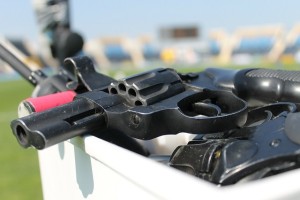We all know the four fundamental safety principles of shooting. Don’t point your weapon at anything you do not intend to shoot. Keep your finger clear and off the trigger until ready to fire. Always know what is before and behind your target. And, of course, treat every weapon as if it is loaded. Now what happens when we apply these solid shooting principles to concealed carrying of firearms? Do they change or adjust?
Guns are always loaded
This may seem counter intuitive to some. There’s still some contention in the concealed carry community as to whether or not having a round in the chamber is necessary or relevant. While there are plenty of YouTube videos about debating the point – the consensus seems to rest with keeping a round in the chamber is a good thing.
And this guy the National Association for Gun Rights seems to confirm that point. The reason? If you’re going to have a concealed carry firearm on your person, it only makes sense to treat the weapon as if it’s loaded at all times. This draws back to the shooting fundamentals of “treat every weapon as if it was loaded.”
Never let the muzzle cover anything you are not willing to destroy
While the man from this video wants you to imagine a laser beam coming from the muzzle of your pistol and slicing everything in its path in half – it would just make more sense to just always have muzzle awareness. There’s no point at pointing your pistol at something you do not intend to shoot, so you might as well practice that principle.
Where it may fall off a bit is when holstering a pistol. It’s simply not practical to holster a firearm in either inside the waistband concealed carry gun holsters or a hip scabbard without inadvertently pointing your pistol at something you do not intend to shoot. Good common sense kicks in for this. But it’s also good to keep aware of where your muzzle is pointing when around others and even yourself.
Keep your finger off the trigger until your sights are on target
The NAGR has it right on with this. There is no such thing as an accidental discharge. There is only negligence. Every concealed carry permit holder with a firearm on his or her person is responsible for every round that leaves the chamber. Negligent discharge is a big problem in not just the CCW community but also to regular firearms enthusiasts. That’s why the first step to staying safe is, “keep your finger clear and off the trigger until you intend to fire.”
Know what is in front of and behind your target
This one is especially difficult. Because, in practice, it should go without saying that you should never discharge your firearm in a direction of anything you don’t intend to shoot. However, knowing precisely what is in front and behind your enemy – from where ever they may appear – produces a whole gray area of “reasonable reaction”. That said, safety should always be your number one priority.
